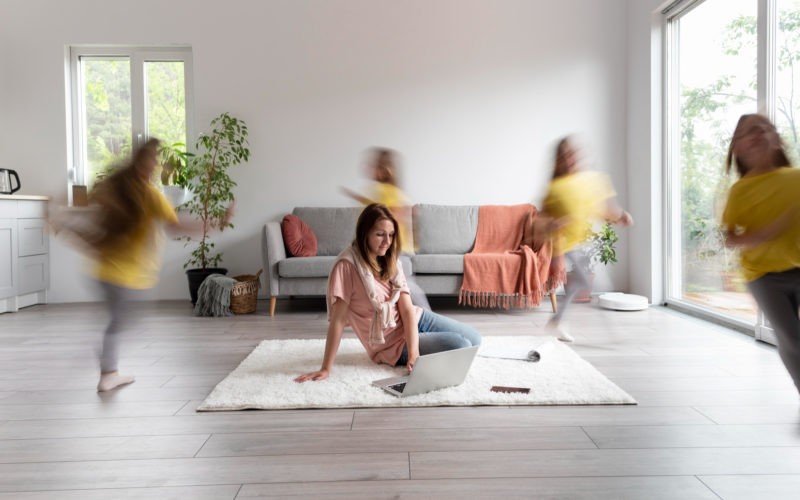When it comes to home design, flooring is often overlooked, yet it is one of the most vital elements that shape the overall aesthetic and feel of a space. From the moment you step into a room, the type of flooring can influence your perception and comfort. It serves as the foundation upon which the rest of the design unfolds, affecting color schemes, furniture selections, and the atmosphere of your home.
Establishing Ambiance
Different flooring materials evoke various moods and feelings. For instance, hardwood floors exude warmth and elegance, making spaces feel cozy and inviting. Conversely, sleek tiles can create a modern and minimalist look. The texture, color, and finish of the flooring can significantly impact the ambiance. A rustic wooden floor, often installed by skilled wood flooring installers, paired with soft area rugs can create a comfortable and relaxed vibe, while polished concrete can enhance a contemporary and industrial feel. Homeowners should consider how they want to feel in their spaces and choose flooring that aligns with that vision.
Influencing Color Schemes
The color of flooring can either complement or clash with the rest of the decor. Lighter shades tend to make rooms feel more spacious and airy, which is ideal for smaller areas. On the other hand, darker floors can add depth and richness, making a room feel more intimate. When selecting flooring, it’s essential to think about how the colors will work with the walls, furniture, and other design elements. For example, a warm-toned wood floor pairs beautifully with earth-toned furnishings, creating a harmonious environment.
Coordinating Furniture Choices
Flooring not only impacts the visual appeal of a room but also affects the selection and placement of furniture. The right flooring can enhance the features of furniture, making it stand out or blend seamlessly into the overall design. A living room with a soft carpet can create a comfortable atmosphere where plush sofas and cushions shine, while a hard surface floor, such as laminate or hardwood, might call for sleeker furniture designs.
The scale and style of the furniture should also correspond with the flooring. For those planning floor installations or renovations, using a reliable flooring estimate template can help organize material choices and ensure accurate budgeting. Large, bulky pieces might feel overwhelming on a delicate, patterned rug, whereas streamlined furniture will likely look more appropriate in such settings. Understanding the relationship between the flooring and furnishings is essential for achieving a balanced design.
Enhancing Design Cohesion
Every element in a home should work in tandem to create a cohesive look. Flooring can act as a unifying factor, connecting different areas within an open floor plan. Choosing a consistent flooring material throughout the living space can help delineate areas without the need for physical barriers. For example, extending hardwood flooring from the kitchen into the dining and living areas creates a seamless transition, allowing for a more spacious feel.
Additionally, the choice of flooring can influence architectural decisions, such as moldings and trims. A classic wood floor might pair nicely with ornate baseboards, while a modern tile could complement simpler, more contemporary moldings. These decisions contribute to the overall coherence of the design.
Functional Considerations
While aesthetic elements are crucial, practicality cannot be ignored. Different flooring materials come with varying maintenance requirements and durability levels. For high-traffic areas, durable options like tile or luxury vinyl may be preferable, as they can withstand wear and tear. In contrast, softer materials like carpet may be better suited for bedrooms, where comfort is a priority.
The functionality of flooring should align with the lifestyle of the inhabitants. Families with young children or pets might opt for easy-to-clean surfaces, while those without such concerns could consider more delicate options that offer comfort and style.
Exploring Budget-Friendly Flooring Options
Design decisions often need to balance aesthetic goals with practical budgets. Fortunately, homeowners have access to a wide range of cost-effective materials that still offer durability and style. Visiting an affordable flooring & rugs store can help identify solutions that fit both the visual direction of the space and financial expectations. Many stores now provide modern laminates, resilient vinyl, and thoughtfully designed rugs that mimic premium materials without the high price tag. This opens the door to creating cohesive, attractive interiors while keeping costs manageable.
Conclusion
In conclusion, flooring serves as a fundamental aspect of home design that significantly influences the overall ambiance, color schemes, furniture choices, and design cohesion. By thoughtfully selecting flooring that aligns with personal style and functional needs, homeowners can create spaces that are not only beautiful, but also inviting and practical. Investing time and effort into choosing the right flooring is essential for achieving the desired aesthetic and ensuring that every element within the home works harmoniously. As you embark on your design journey, remember that the ground beneath your feet holds the key to setting the tone for your entire space.












